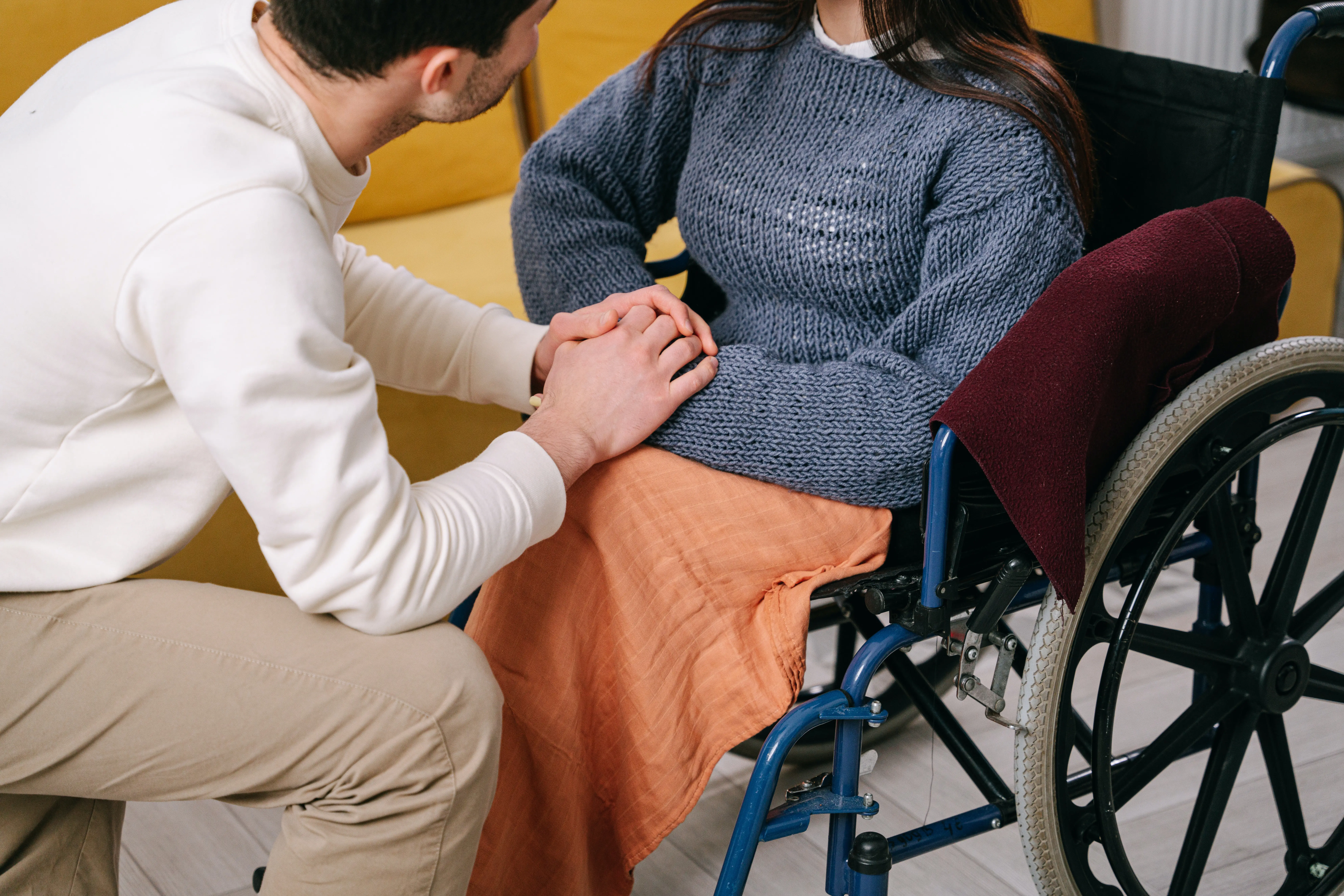Challenges Faced by Persons with Disabilities During a Disaster
According to Quaill et al. (2018), the risk of sustaining injuries or death among persons with physical disabilities is twice to four times higher compared to risk among the general population during disaster events. The various physical disabilities among this group make them vulnerable due to activity limitation caused by physical impairments. Their evacuation process during a disaster event takes longer than the general population due to a lack of accessible transport. For example, during an evacuation, people are advised to use stairs, which limits a physically challenged individual escape. Households of persons with disability are also affected during disaster events. Various studies have also indicated that there is an increased risk and decreased chances of advance evacuation during disasters among households of persons with disability (Stough, Ducy, & Holt, 2017). Due to the unique needs of persons with disability, evacuation shelters may pose challenges such as isolation and disruption of routines resulting from difficulty to access their support groups in the new environment (Good, Phibbs & Williamson 2016, Takahashi & Kitamura 2016, Zakour 2015). The challenges are also faced post-disaster by people with disabilities, such as longer mental recovery time. There are numerous challenges faced by persons with disabilities during the evacuation process in disaster events due to their increased vulnerability.
These adverse outcomes result from an interaction between various elements such as environmental, individual, and societal for persons with disabilities. The United Nations identified that there are disproportionate effects on people with disabilities due to income inequality, poor living conditions, exclusion from decision-making processes, limited access to essential services, and inadequate infrastructure (UNISDR, 2015c). According to Stough and Kang (2015), a survey by United Nations in 2013 among 5,000 people with disabilities in 126 countries indicated that 80% of those interviewed have difficulty evacuating immediately in case of a sudden disaster event. Disaster mitigation plans should therefore consider these factors and the context-specific needs of persons with disabilities.
Enhancing Resilience Among People with Disabilities during Disaster Events
There are few studies regarding disaster events from persons with disabilities perspective. In a review of seven articles on the topic, Quaill et al. (2018) identified that disaster preparedness by communities, individuals, and organizations was the most common factor in enhancing PWD resilience during disaster events. Preparedness involves strong personal networks, including disability organization, family, etc. and storing necessary items for a caregiver. Other measures that improve preparedness among persons with disabilities include self-assessments of potential needs, an evacuation plan, knowledge of accessible and safe evacuation centre, and pre-registration for emergence assistance.
Another common technique of enhancing resilience among PWD identified by Quaill et al. (2018) was adaptation. Several studies reviewed found that adaptation during a disaster entails the best use of the available resources. Adaptation also involves learning from personal and others’ experiences of previous disaster events to enhance one’s preparedness (Good, Phibbs & Williamson, 2016). Social capital is also an essential element in the enhancement of resilience among persons with disabilities. Social capital is the connection between social resource and personal resources. It is increased when personal networks of persons with disabilities are strengthened and services and resources are adapted by the community to assist PWD. It not only increases preparedness for a disaster but also promotes resilient recovery post-disaster among the group. The inclusion of disaster events survivors in policy development and disaster planning is crucial for social capital improvement.
Complexity in the Definition of Disability
A significant barrier to the successful development and application of disaster risk mitigation interventions among persons with disabilities is the definition of disability. There is a complexity regarding the labelling and identification of disability. According to Stough and Kelman (2018), there are substantial variations in intellectual levels, individual functioning, and behavioural competencies, even in a named class of disability. These differences in characteristics among people with disabilities raise a question in identifying them as a distinct class of persons. Considering historical and widespread mistreatment and discrimination and societal view of people with disabilities, and promotion of common discourse on disability, it is essential to conceptualize PWD as having a shared minority (Mitchell & Karr, 2014). However, disability is a cultural and social construct, which makes it difficult to define universally. For instance, whereas dyslexia is identified as a learning disability within the United States, it might not be easily identified in countries with low literacy levels, such as Chad and Niger.
Moreover, even in countries that consider dyslexia a learning disability, there are differences in the definition of the concept of “learning disability.” In the United States, “learning disability” includes learning differences that are not influenced by intellectual functioning. On the other hand, the United Kingdom’s definition of “learning disability” is corresponding to the category of “intellectual disability” within the United States. The variation in classification and definition of disability impact the incidence and prevalence report of disabilities across time, cultures, and societies. Besides, it limits the discourse on disability, such as disaster risk mitigation interventions.
A precise classification and definition are essential to the successful development and implementation of disaster risk mitigation interventions among persons with disabilities. According to Twigg et al. (2018), exclusion and inequality of people with disabilities are deeply rooted in social structure, cultural assumptions, and economic disparities. These factors contribute to the increased vulnerability of persons with disabilities during each stage of disaster events. Exclusion and inequality practices during pre-disaster are extended into the post-disaster period, leading to reinforcement of social, physical, and institutional barriers (Zayas, 2017). Thus, challenging the specific definitions and classification of disability is essential to increasing equality and including persons with disabilities into disaster risk mitigation interventions at all stages of a disaster event.
Overcoming Barriers in Disaster Risk Mitigation Among People with Disabilities
A human rights-based approach provides an effective method of shifting the paradigm of policies and practices regarding disaster risk mitigation interventions among persons with disabilities. This approach ensures that PWD are seen as active members of the society with inherent rights and capable of making decisions and claiming those rights (ADCAP, 2018). In recent years, there have various standards, policies, and guidelines developed to address the needs and rights of PWD. A significant influence of disability inclusion in disaster policy agenda is the enforcement of the UN Convention on the Rights of Persons with Disabilities (UNCRPD) in 2008 (Gartrell et al., 2018). The conventional is instrumental in development of policies regarding national disaster legislation in multiple nations. Other global policy instruments that address PWD needs and rights include the 2015 Sendai Framework for Disaster Risk Reduction and Charter on Inclusion of Persons with Disabilities in Humanitarian Action endorsed by the World Humanitarian Summit in 2016 (Quaill et al., 2018). Although there has been some progress in implementing human-rights-based approaches, on the ground, there is little evidence of targets application and no consensus on the indicators for disability-inclusive disaster risk mitigation programs.
Research Questions
- What are the experiences of persons with disabilities during a disaster event?
- How does the challenge of classifying and defining disability in numerous countries affect disability-inclusive disaster risk mitigation interventions?
- How do human rights-based approaches enhance disaster preparedness and resilience among persons with disabilities?
- What are the indicators for disability-inclusive disaster risk mitigation interventions?
References
ADCAP (2018) Humanitarian inclusion standards for older people and people with disabilities. Age and Disability Capacity Programme (www.helpage.org/resources/publications/)
Gartrell, A., Jennaway, M., Manderson, L., Fangalasuu, J., & Dolaiano, S. (2018). Social determinants of disability-based disadvantage in Solomon islands. Health promotion international, 33(2), 250-260.
Good, G. A., Phibbs, S., & Williamson, K. (2016). Disoriented and immobile: The experiences of people with visual impairments during and after the Christchurch, New Zealand, 2010 and 2011 earthquakes. Journal of Visual Impairment & Blindness, 110(6), 425-435.
Mitchell, D., & Karr, V. (Eds.). (2014). Crises, conflict and disability: Ensuring equality. Routledge.
Quaill, J., Barker, R., & West, C. (2018). Experiences of individuals with physical disabilities in natural disasters: An integrative review. Australian Journal of Emergency Management, The, 33(3), 58-63.
Stough, L. M., & Kang, D. (2015). The Sendai framework for disaster risk reduction and persons with disabilities. International Journal of Disaster Risk Science, 6(2), 140-149.
Stough, L. M., & Kelman, I. (2018). People with disabilities and disasters. In Handbook of disaster research (pp. 225-242). Springer, Cham.
Stough, L. M., Ducy, E. M., & Holt, J. M. (2017). Changes in the social relationships of individuals with disabilities displaced by disaster. International journal of disaster risk reduction, 24, 474-481.
Takahashi, K., & Kitamura, Y. (2016). Disaster anxiety and self-assistance behaviours among persons with cervical cord injury in Japan: a qualitative study. BMJ Open, 6(4), e009929.
Twigg, J., Kett, M., & Lovell, E. (2018). Disability inclusion and disaster risk reduction. Briefing Note. London: Overseas Development Institute.
UNISDR (United Nations International Strategy for Disaster Reduction). 2015c. UN world conference on disaster risk reduction, issue brief: Inclusive disaster risk management—Governments, communities and groups acting together. http://www.wcdrr.org/ uploads/Inclusive-Disaster-Risk-Management-2.pdf. Accessed 08 May 2021
Zakour, M. J. (2015). Effects of support on evacuation preparedness of persons with disabilities. Journal of social work in disability & rehabilitation, 14(1), 1-22.
Zayas, J. (2017). Building back better: making inclusion work in disaster recovery in the aftermath of Typhoon Haiyan.









